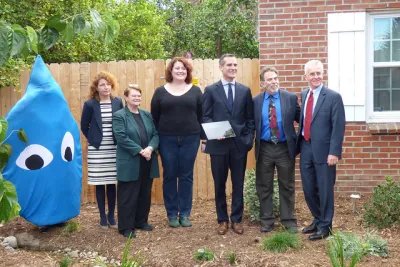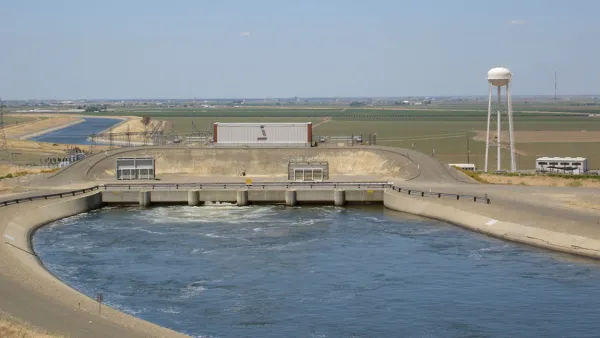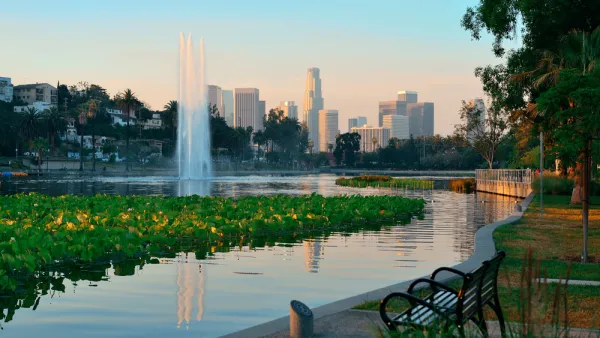In October 2014, Los Angeles Mayor Eric Garcetti acted to make the city more resilient from drought and climate change. In 2016, we get an update from leaders Gary Hildebrand and Marty Adams on L.A.'s stormwater capture systems.

The evolution of water management in Los Angeles has expedited recently, as climate change and the historic drought have spurred more collaboration and innovation. After Mayor Eric Garcetti called for a reduction in the L.A. Department of Water and Power's purchase of imported potable water by 50 percent by 2024 and the creation of an integrated water strategy that increases local water supplies and that improves water security in the context of climate change and seismic vulnerability, leaders got to work. Gary Hildebrand, deputy director at the Los Angeles County Department of Public Works, and Marty Adams, director at the Los Angeles Department of Water and Power, join The Planning Report to explain advancements in their fruitful collaboration between city and county on stormwater capture.
Stormwater capture is a strategy that has received renewed attention as Los Angeles strives to shift to a fully local water supply. Hildebrand and Adams, veteran water officers, explain the impact of state and local drought action on their work and update The Planning Report on their ongoing projects, including the 2015 Stormwater Capture Master Plan and Rory Shaw Wetlands.
They describe a shift in focus from large-scale regional infrastructure to distributed projects that repurpose public and private lands—inspired by innovative conservation techniques worldwide. Marty Adams shares LADWP's progress, stating:
“LADWP now has a pilot program with LA County, TreePeople, and LA Sanitation for a smart-cistern setup where stormwater is be collected in a cistern on someone’s property… and then prior to it raining, the water in the cistern would be released to soak into the ground and make that volume available to capture the next storm as well.” With summer months approaching and the lack of an impactful El Nino, the water leaders share their vision for LA’s water future.
Both leaders agree that the mayor's action has helped accelerate a number of projects, including enhancements to the Pacoima and Tujunga spreading grounds. Even though the drought has had crippling impacts, they both believe that it has made everyone realize that Los Angeles has a good untapped resource in stormwater capture, which needs significant further investment.
FULL STORY: Metro LA’s Water Supply Increasingly Relying on Management of Stormwater

Analysis: Cybertruck Fatality Rate Far Exceeds That of Ford Pinto
The Tesla Cybertruck was recalled seven times last year.

National Parks Layoffs Will Cause Communities to Lose Billions
Thousands of essential park workers were laid off this week, just before the busy spring break season.

Retro-silient?: America’s First “Eco-burb,” The Woodlands Turns 50
A master-planned community north of Houston offers lessons on green infrastructure and resilient design, but falls short of its founder’s lofty affordability and walkability goals.

Test News Post 1
This is a summary

Analysis: Cybertruck Fatality Rate Far Exceeds That of Ford Pinto
The Tesla Cybertruck was recalled seven times last year.

Test News Headline 46
Test for the image on the front page.
Urban Design for Planners 1: Software Tools
This six-course series explores essential urban design concepts using open source software and equips planners with the tools they need to participate fully in the urban design process.
Planning for Universal Design
Learn the tools for implementing Universal Design in planning regulations.
EMC Planning Group, Inc.
Planetizen
Planetizen
Mpact (formerly Rail~Volution)
Great Falls Development Authority, Inc.
HUDs Office of Policy Development and Research
NYU Wagner Graduate School of Public Service




























